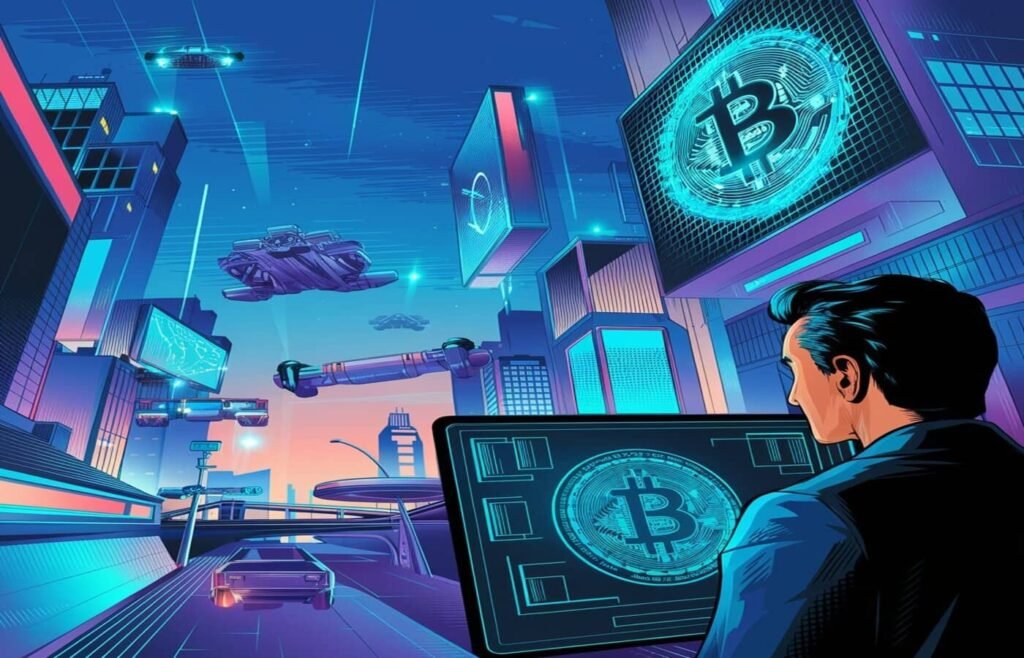What do the crypto future predictions look like? Predicting what is to come in the next couple of years requires combining experts’ opinions from a global survey among top venture capitalists, data from crypto intelligence firms, and estimations of the CEOs of the major crypto projects.
Bitcoin and other virtual currency investors were anxious as they entered January 2022. The year before, Bitcoin was 61% higher, while Ethereum was 409% higher. It did spectacularly well until the big rally in 2017. Then, in 2018, the market was down again, and in November 2021, public prices began to fall. There were fears that another big crash was around the corner.
It was found that although positive trends increased in some cases in 2021, they were replaced by negative changes in the spring of 2022. Inflation, a war in Ukraine, and other problems led to a slump in the stock market. But the downfall of cryptocurrencies was steeper than that of the stock market or shares and bonds.
Why cryptocurrency could be the future of money
In an ideal scenario for 2023 and beyond, global regulators might agree on a unified framework for crypto regulation. However, this seems unlikely since countries have very different views on crypto, from El Salvador and the Central African Republic recognizing Bitcoin as legal currency, to China banning crypto transactions altogether. So, the worldwide agreement soon seems doubtful.
On the other hand, the U.S. is making progress with federal crypto regulations. The Biden administration has assembled a skilled team led by Treasury Secretary Janet Yellen and SEC Chairman Gary Gensler. While Yellen has had a cautious approach to crypto, Gensler has taught courses on Bitcoin and blockchain at MIT.
Crypto future predictions by experts
That is why future predicting is such a touchy issue, and yet, at the same, time, it can all be so stimulating. Crypto’s future appears to be dominated by decentralization with a multi-chain environment in the foreseeable future. Not all the blockchains will be relevant for each application, therefore, there will be a convergence towards those that strike the right balance regarding decentralization and the UI.
As is the case with most projects, many may die out, but the strongest shall survive, especially where bridges between protocols and communities are formed. New ecosystems different from the existing ones, such as Ethereum’s EVM, will be developed to suffice the challenges of security as well as efficiency.
The future of the crypto world will be much better as more people will understand that there is nothing wrong with cryptography.
Consumers will be rationalized and markets will become pluralized and ‘un-politicized’ through the application of automation of value transactions. As in open source communities, there might appear ‘world tribes’ of cryptocurrency users trading in unison and splitting each time they disagree. But, of course, nothing is impossible;
NFT and Gaming can be the future of Crypto
Ross Soroka, an NFT and gaming expert, thinks that an inevitable crypto-gaming trend is emerging, to a significant degree because the experience will eventually be easily accessible.
Most of the audience is not that technologically inclined, and therefore gaming normalizes interactions while making it easy to interface with various networks. It has been forecasted that traditional gaming has already skyrocketed its users, and the same thing can be said of crypto gaming, especially with the growing Play-to-Earn models.
In these models, people have their resources on the blockchain and can make money, whereas in traditional gaming corporations earn the money.
The expert is about to start AAA-level crypto games in 2-3 years in the future. These will be more exclusive and will come with lots of entry barriers to ensure that the early proponents of blockchain receive all the benefits from the blockchain technology. In the long run, even massive games such as Fortnite may have a problem, as their entire model is based on skin sales.
Crypto-gaming is an advanced form of gaming where players can resell and gain profit from skins and other things associated with skins; this is similar to the current NFT craze. To sum it up, crypto gaming serves the purpose of rewarding users and engaging them in the ecosystem, not to mention the fact that the latter essentially implies buying virtual items that do not belong to them.
Australia is at the moment still lagging behind such countries as Vietnam, China, and the U.S. in the aspect of crypto gaming.
Nevertheless, some of the studios we invest in are being approached by big names such as Animoca, and this in effect entails that we could be indirectly participating in the gaming ecosystem by connecting to larger gaming networks. Unfortunately, there isn’t much information released by these major firms at this point.
Can Blockchain be the future of Crypto?
Solana is establishing partnerships to become a solid and active ecosystem at Solana. It natively supports both USDC & USDT, two widely required tokens for Decentralised Finance (DeFi) and it is available only with Algorand & Ethereum.
To onboard 1 billion users into the blockchain, we need strong basic building blocks or “primitives”. By definition, there are stablecoins, lending and borrowing platforms, price feeds or oracles, and asset compilations.
Serum is one such primitive that has been developed on the Solana blockchain. Its goal is to replicate as closely as possible the functioning of a centralized exchange having a limited order book, a matching engine, and fast and cheap settlements and bring all this to a decentralized world and possibly change trillions worth of industries.

